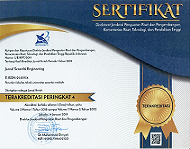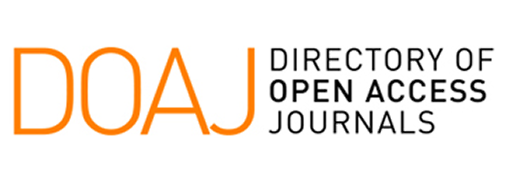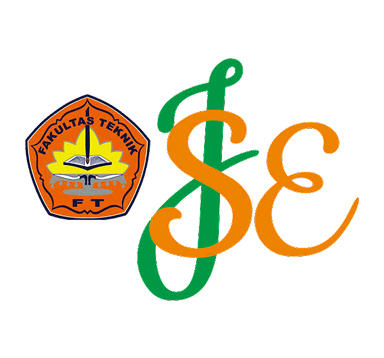Analysis of PM Dispersion and Source Identification in Jl. Soekarno-Hatta, Pekanbaru, using HYSPLIT
Keywords:
PM, Pekanbaru, Air QualityAbstract
This study investigates the spatiotemporal characteristics of PM pollution in Jl. Soekarno-Hatta, Pekanbaru, Indonesia, during January to November 2024, integrating air quality monitoring data, meteorological analysis, and HYSPLIT trajectory modeling. The highest PM concentration was recorded on 22–23 September 2024 at 55.74 µg/m³, corresponding to an AQI of 131, classified as “Unhealthy for Sensitive Groups.” Monthly averages ranged from 18 µg/m³ in January to 56 µg/m³ in September. A total of 37 days exceeded 50 µg/m³, and 112 days surpassed the U.S. EPA’s moderate threshold of 35 µg/m³. Meteorological data showed that low wind speeds (2.3–2.7 kph), persistent humidity (76–82%), and nighttime temperature inversions contributed to pollutant accumulation. Rainfall exhibited a strong inverse correlation with PM, with the driest month (June, 110 mm) aligning with high PM levels, and the wettest (November, 312 mm) aligning with lower concentrations (~21 µg/m³). HYSPLIT backward trajectory modeling revealed that air masses originated from the northwest, indicating contributions from transboundary sources such as peatland fires in West Sumatra. Forward trajectories showed that pollutants from Jl. Soekarno-Hatta, Pekanbaru, could reach Jambi and South Sumatra. The findings highlight the need for integrated air quality strategies, including emission reduction, fire prevention, and early warning systems, to mitigate PM exposure and protect vulnerable populations in tropical urban environments.
References
1. Ma, X., et al., Unlocking Urban Breathability: Investigating the Synergistic Mitigation of PM2.5 and CO2 by Community Park Green Space in the Built Environment Using Simulation. Buildings, 2024. 14: p. 3407.
2. Bui, T.H., Source Identification and Health Risk Assessment of PM2.5 in Urban Districts of Hanoi Using PCA/APCS and UNMIX. Environmental Science and Pollution Research, 2024. 31(8): p. 11815-11831.
3. Aniyikaiye, T.E., P.S. J., and J.N. and Edokpayi, A spatial approach to assessing PM2.5 exposure level of a brickmaking community in South Africa. Journal of the Air & Waste Management Association, 2024. 74(5): p. 345-358.
4. Lee, D., et al., Relationship Between Synoptic Weather Pattern and Surface Particulate Matter (PM) Concentration During Winter and Spring Seasons Over South Korea. Journal of Geophysical Research: Atmospheres, 2022. 127.
5. Kraisitnitikul, P., et al., Contrasting compositions of PM2.5 in Northern Thailand during La Niña (2017) and El Niño (2019) years. Journal of Environmental Sciences, 2022. 135.
6. Shiogama, H., et al., Historical and future anthropogenic warming effects on droughts, fires and fire emissions of CO2 and PM2.5 in equatorial Asia when 2015-like El Niño events occur. Earth System Dynamics, 2020. 11: p. 435-445.
7. Kolo, Stephen Sunday, et al. "Assessment and Modeling of Particulate Matter at a Major Intersection in Minna, Nigeria." Applied Research Conference in Africa. Cham: Springer Nature Switzerland, 2023.
8. An, X., et al., Synergistic Effect of El Niño and Arctic Sea‐Ice Increment on Wintertime Northeast Asian Anomalous Anticyclone and Its Corresponding PM2.5 Pollution. Journal of Geophysical Research: Atmospheres, 2023. 128.
9. Tokarev, A. and N. Shaparev, Assessment of the influence of weather conditions on the concentration of PM 2.5 in the atmosphere of Krasnoyarsk. IOP Conference Series: Materials Science and Engineering, 2020. 862: p. 062040.
10. Al-Kraimeen, A., S. Hamasha, and M. Abu-Allaban, Spatial and Temporal Variation of Air Quality Index in Amman-Zarqa Urban Area. Nature Environment and Pollution Technology, 2024. 23: p. 1697-1708.
11. Sharma, A. and P. Rajput, Role of Biomass Burning in Greenhouse Gases Emission. 2022. p. 157-177.
12. Fadel, M., et al., Chemical profiles of PM2.5 emitted from various anthropogenic sources of the Eastern Mediterranean: Cooking, wood burning, and diesel generators. Environmental Research, 2022. 211: p. 113032.
13. ChooChuay, C., et al., Effects of Agricultural Waste Burning on PM2.5-Bound Polycyclic Aromatic Hydrocarbons, Carbonaceous Compositions, and Water-Soluble Ionic Species in the Ambient Air of Chiang-Mai, Thailand. Polycyclic Aromatic Compounds, 2022. 42(3): p. 749-770.
14. Mustaqiman, A.N., et al., Ambient PM2.5 Transport in Bandar Lampung City: HYSPLIT Model and Meteorological Profile. 2025, 2025. 11(3): p. 8.
15. Mustaqiman, A.N., Modeling Air Pollutant Dispersion in Urban Areas: A HYSPLIT-Based Analysis of PM 2.5 Dynamics in Medan, Indonesia. Jurnal Serambi Engineering, 2025. 10(1).
16. Nuryanto, N. and S. Melinda, Identifikasi Sumber Particulate Matter (PM) 2.5 di Sorong Berdasarkan READY Hysplit Backward Trajectory. Buletin GAW Bariri, 2023. 4: p. 11-20.
17. Ilyas, R.M., F.J. Anggraini, and Z. Rodhiyah, Pemodelan Sebaran Polutan PM10 dan PM2,5 Model Hysplit pada Kawasan Gentala Arasy Kota Jambi. Jurnal Engineering, 2022. 4(2): p. 39-54.
Downloads
Published
Issue
Section
License
Copyright (c) 2025 Aulia Nur Mustaqiman (Author)

This work is licensed under a Creative Commons Attribution 4.0 International License.












